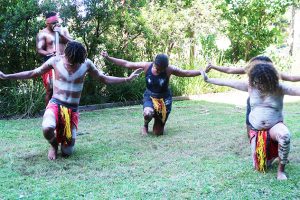



To receive important alerts and updates from Gold Coast Primary Health Network, please submit the form below.
"*" indicates required fields

To receive important alerts and updates from Gold Coast Primary Health Network, please submit the form below.
Our vision is for an inclusive Australian community that acknowledges the impacts of our history, values the rights, experiences and equity of health and well-being of Aboriginal and Torres Strait Islander and non-Indigenous cultures, builds respectful and trusted relationships between all Australians, and contributes to strengthening a shared national culture of compassion and connection.
Gold Coast Primary Health Network acknowledges the importance of reconciliation with First Nations’ peoples and their cultures, in building one world class health system for the families of the Yugambeh Language Region of South East Queensland. Reconciliation, in the context of our organisation, represents embedding cultural understanding into our internal and external activities, and striving for equal health, social, and emotional well-being outcomes for First Nations’ peoples through a culturally informed, welcoming, and proud environment.
We are excited to announce that GCPHN’s refreshed Innovate RAP has been endorsed by Reconciliation Australia.
Our Innovate RAP spans from March 2023 – March 2025, led by the RAP Committee with support from all teams within our organisation.
As we move into implementation, GCPHN will work with the local Elders advisory groups to include further representation on the RAP committee.
The Traditional Custodians of the Gold Coast region and surrounding area are the families of the Yugambeh Language Region. Geographically, the Gold Coast region stretches from Coolangatta in the south up to Logan and Albert Rivers in the north/north-west; and to Tamborine, Mt Tamborine, Canungra and Beechmont to the west. This comprises of the City of Gold Coast Council as well as neighbouring Tamborine – Canungra which is part of the Scenic Rim Regional Council. The Gold Coast region adjoins the New South Wales border and as such, the growing population south of the border often access services within the Gold Coast region.
 As of 2021, Census data shows the Gold Coast is home to an estimated 640,788 people and 13,901 people in the region identify as Aboriginal and Torres Strait Islander (2.2% of the population). Comparatively, the proportion of Aboriginal and Torres Strait Islander peoples in the region is lower compared to the rest of Queensland. However, within the region, Ormeau – Oxenford has the largest percentage of Aboriginal and Torres Strait Islander residents (2.8%) and has the highest number of Aboriginal and Torres Strait Islander residents (4359), a population that has almost doubled since the 2016 Census.
As of 2021, Census data shows the Gold Coast is home to an estimated 640,788 people and 13,901 people in the region identify as Aboriginal and Torres Strait Islander (2.2% of the population). Comparatively, the proportion of Aboriginal and Torres Strait Islander peoples in the region is lower compared to the rest of Queensland. However, within the region, Ormeau – Oxenford has the largest percentage of Aboriginal and Torres Strait Islander residents (2.8%) and has the highest number of Aboriginal and Torres Strait Islander residents (4359), a population that has almost doubled since the 2016 Census.
So we can provide you with the most accurate information,
please tell us a little more about yourself

